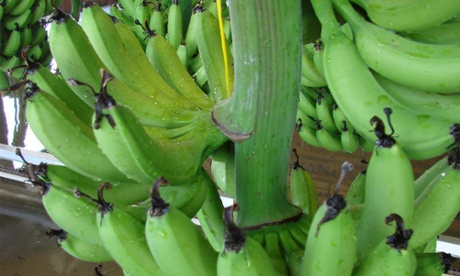Genetically modified Australian fruit could save the sight – and lives – of thousands of East African children

It’s the genetically modified fruit from Australia that could turn East African nations into life-saving banana republics.
Queensland University of Technology (QUT) researchers have engineered bananas grown in far north Queensland to increase the levels of beta-carotene, which is converted to vitamin A in the body.
The goal, they say, is to stop thousands of children in Uganda and the surrounding countries from going blind and dying from vitamin A deficiency.
And now they’ve successfully bent the banana genome, it’s being tested on humans for the first time.
About 10 kilograms of the yellow fruit – with orange flesh – grown near Innisfail have just been shipped to Iowa State University, where the trials are being conducted.
Five Ugandan PhD students are working with leader Professor James Dale on the nine-year project, on which the Bill and Melinda Gates Foundation has spent $10m.
Dale said that by 2020 vitamin A-enriched banana varieties would be grown by farmers in Uganda, where about 70% of the population survive on the fruit.
“The highland or East African cooking banana, which is chopped and steamed, is a staple food of many East African nations, but it has low levels of micronutrients, particularly pro-vitamin A and iron,” Dale said.
“We’re aiming to increase the level of pro-vitamin A to a minimum level of 20 micrograms per gram dry weight.”
Vitamin A deficiency is the leading cause of preventable blindness in children and is an especially severe problem in Africa, where people are poorest, according the World Health Organisation.
Many children aged from birth to six simply don’t survive.
Dale said previous US trials using Mongolian gerbils had already proved successful on the bananas.
When field trials in Uganda were in place, he said, the same technology could be transferred to countries such as Rwanda, parts of the Democratic Republic of Congo, Kenya and Tanzania.
